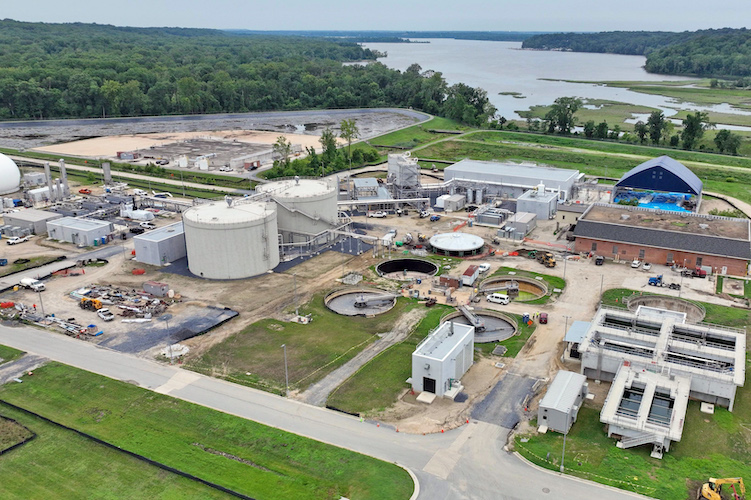The method by which a construction project is delivered often makes all the difference in its outcome. A project with a straightforward scope can be very successful completed via a design-bid-build delivery. But if you throw in substantial size, complexity, a fast-tracked schedule, and shifting variables, a collaborative delivery approach is crucial to achieving a project’s budget and schedule goals.
The PC Construction team is currently in the testing and commissioning phase of the $271 million bioenergy project at WSSC Water’s Piscataway facility in Accokeek, Maryland. This project incorporates cutting-edge technology that will transform the way WSSC handles biosolids at their five facilities in Prince George’s and Montgomery Counties in Maryland. This project includes the use of anaerobic digestion and Cambi’s thermal hydrolysis process to produce Class A biosolids, which will work together to maximize digester performance and increase methane gas production.
At the onset, WSSC Water selected progressive design-build because they knew that a collaborative, transparent design and construction process was absolutely necessary for their complex project. And that proved to be exactly the case, especially when the inevitable bumps in the road provided opportunities for improvement.
Our team of designers, led by Stantec, had worked through the major early design workshops and decision-making process to get the project documents to the issued for construction (IFC) stage. This design phase included major stakeholders from the ownership team who worked tirelessly to guide our team toward key decisions throughout the early stages of the project.
Like many large-scale municipal organizations, changes in personnel occur. Retirements, staffing shortages, and advancement opportunities see individuals come and go from a large wastewater treatment plant. This was just the case at Piscataway. Just as construction was beginning in June 2020, existing staff retired and several new plant operations team members were brought on board to operate the facility after the completion of construction.
The new staff had a number of concerns and ideas that our team continues to collaborate with WSSC and the operations team to address. One particular issue was how the plant would operate during Cambi’s annual maintenance and inspection period. The original decision to temporarily revert to a lime treatment system to stabilize the biosolids at Piscataway and to hold biosolids at the other facilities was questioned. While this concept is sound and would work, process improvement was the new goal.
The team was up to the challenge and Cambi had a potential solution. Cambi had just completed the testing of a new redundant module in their process train that, when coupled to the existing system, allowed uninterrupted utilization during annual maintenance and inspection. Approximately six months after the guaranteed maximim price (GMP) and with construction well underway, WSSC and HDR (owner advisor) tasked the progressive design-build team with investigating the feasibility of incorporating the redundant module into the project and to determine any potential cost or schedule impacts. We quickly identified impacts with several aspects of the proposed scope change, including materials that had already been released for fabrication.
Through a series of collaborative workshops with WSSC and HDR, and with significant input from Cambi, the team was able to develop a plan to move forward with the Cambi redundant module while avoiding schedule impacts and improving the long-term maintenance of the facility. This collaboration would not have been possible outside of the progressive design-build delivery method.

